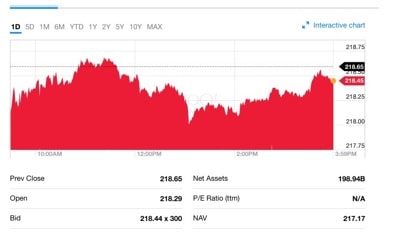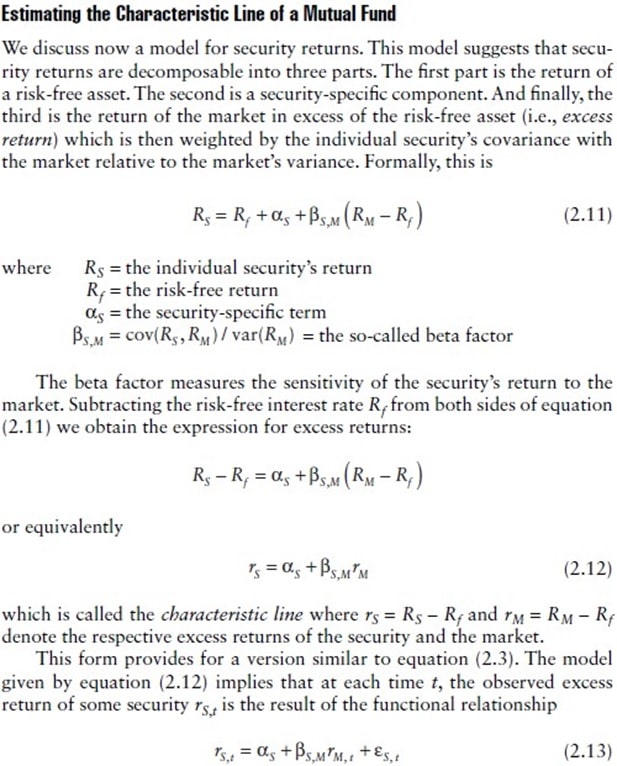BUS5SBF Statistics for Business and Finance
Assignment 02: Which Stock Will Perform Better?

You have been asked by your client to recommend which of two available stocks will perform better over time, relative to the market. You will need to compare risk and return relationship of the two stocks over time, and present your findings as a written report detailing your calculations and findings.
The goal of this assignment is to
- acquaint you with quantitative data analysis skills often required by different organisations
- estimate the Capital Asset Pricing Model (CAPM)
- provide you with feedback on your ability to carry out such tasks
- learn how and when to use different quantitative techniques covered in the second half of this course.
Prepare your written report by taking into account the following points:
- Set out all your calculations for different parts of Tasks 1 and 2 below
- Present your results in graphs and charts as appropriate
- Provide all necessary steps involved, for example, five steps of hypothesis testing
- Explain what your results means to you, in a layman language that your client can understand. For example, what conclusions can you draw from each of your findings after performing above tasks.
- Your written report must be no more than Twelve (12) pages in total, including all appendices, graphs, tables, references and written answers.
- Answer the questions directly. Do not present unnecessary graphs or numerical measures, undertake inappropriate tests or discuss irrelevant matters.
There are two main tasks involved in this assignment.
Task 1: Comparison of stock returns
Task 2: Estimation of CAPM and Hypothesis Testing
Variables and Data Sources:
PS&P = S&P 500 Price Index
This is Standard and Poor index of 500 companies and will be used as market portfolio.
http://finance.yahoo.com/quote/SPY/
PIBM = International Business Machines Stock Price
A particular stock we are interested in to determine how it behaves in response to market changes.
http://finance.yahoo.com/quote/IBM/
PGM = General Electric Stock Price
A particular stock we are interested in to determine how it behaves in response to market changes.
http://finance.yahoo.com/quote/GE/
rf =Interest rate on 10 year US-Treasury Note
This variable will serve as a risk-free interest rate. We will use this variable to compute excess returns of IBM and GE and Market excess returns. http://finance.yahoo.com/quote/%5ETNX/
Downloading the Data (10 Marks)
Download monthlydata for S&P 500 index, International Business Machines (IBM) Stock Price, General Electric (GE) Stock Price, and US TN (10 year) by clicking the above links and choosing Historical Data for all variables covering the period based on the following criterion.
Sample
Task 1: Comparison of Stock Returns (50 Marks)
- Obtain the line charts for S&P, IBM and GE series (prices) and comment on your observations. (6 marks)
- (3+6+3+2 = 14 marks)
- Now obtain returns for these three series (ignoring any of the dividends paid) using the transformation: r1 = 100[ln(Pt) - ln(Pt-1)]%.
- Obtain the summary statistics together with their histograms to further analyse each of the three returns distributions.[1]
- Interpret your results. In particular, explain risk and average return relationship.
- Based on your statistics, is IBM relatively riskier than the GE stock?
- Suppose you are not convinced with your finding about riskiness of the two stocks based on your estimates for sample standard deviations and, therefore, you want to test hypothesis whether both returns are equally volatile ( H0 :α2 IBM=α2GE).
Perform an appropriate hypothesis test using 5% significance level and provide all the steps involved.
What do you conclude about returns volatility in this case? (10 marks)
- Before investing in one of the two stocks based on higher risk, you further want to determine whether both stocks have same population average return.
Perform an appropriate hypothesis test given the sample and report your findings. Which stock will you
prefer and why? (10 marks)
- Draw the scatter plot of each of the two returns series against market return. Also, compute the sample covariance and sample correlation between these two stocks and explain your findings. (10 marks)
Task 2: Estimation of CAPM and Hypothesis Testing (40 Marks)
- Now compute excess return on your preferred stock and excess market return by subtracting the 10year T-Bill rate from both series. That is, (5 marks)
Excess return on preferred stock: yt = rt - rft
Excess return on market: xt = rM.t - rf.t
Capital Asset Pricing Model
(See last page for more details on CAPM taken from The Basics of Financial Econometrics by Fabozzi et al. (2014))

- Estimate the CAPM and report your results. (4+4+2=10 marks)
- Interpret the estimated coefficients in relation to the profitability of the Stock and its riskiness in comparison with the market.
- Interpret the value of R2.
- Perform the hypothesis test to determine whether your preferred stock is aggressive (a stock is an aggressive stock if the slope coefficient is greater than 1 and is defensive stock if the slope coefficient is less than 1). (10 marks)
- Construct 95% confidence interval for the slope coefficient. (5 marks)
- Estimate AR (1) model (that is, AutoRegressive model of order 1) using either GE stock price or IBM
stock price. Report and interpret your result. (10 marks)
Estimating the CAPM for Mutual Funds (Fabozzi (2014), p.25)

[1] Monthly return for August 2016 will be calculated as r2016 = 100[ln(PAugust2016)-ln(PJuly2016)] %


